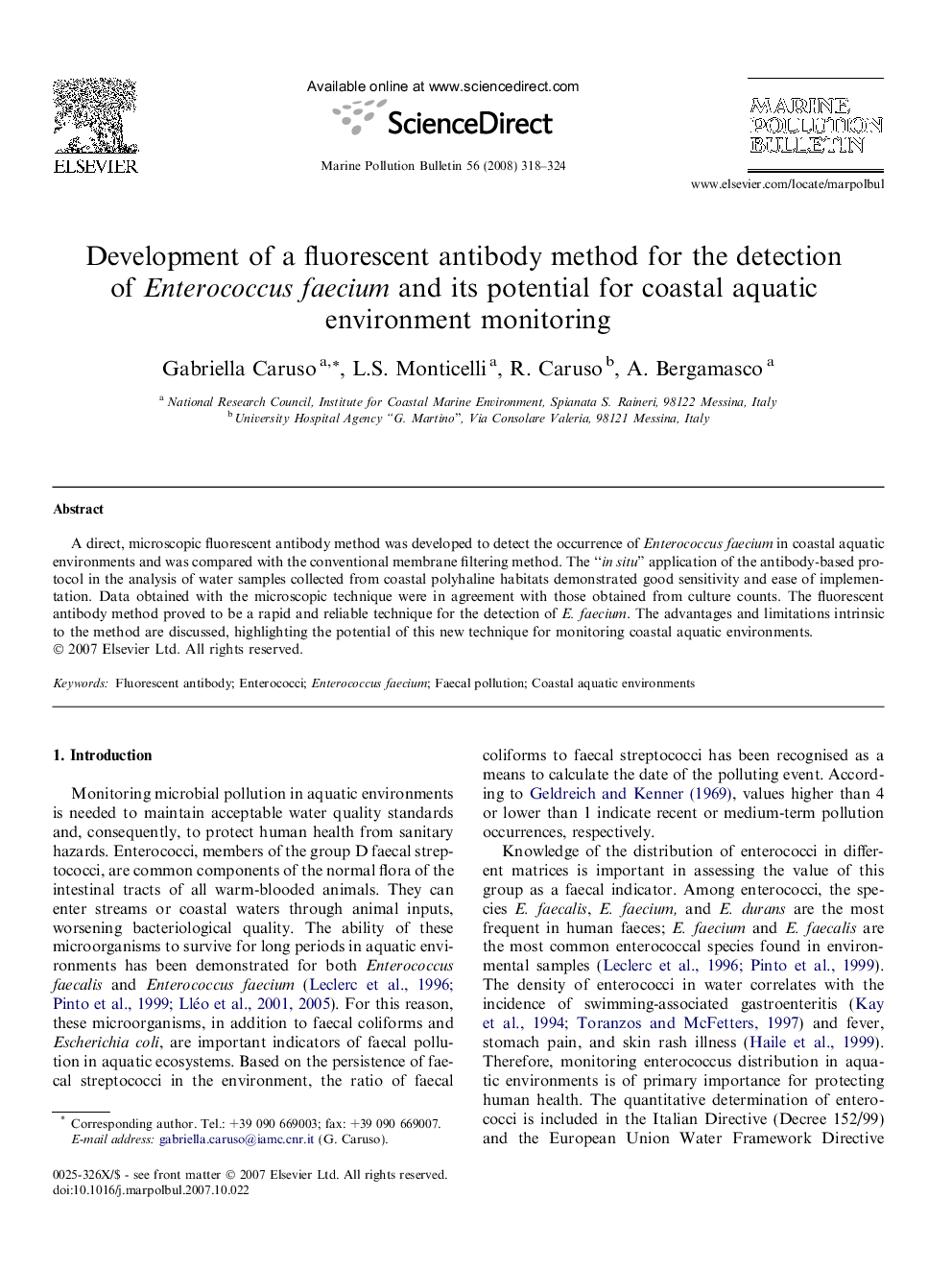| Article ID | Journal | Published Year | Pages | File Type |
|---|---|---|---|---|
| 4477277 | Marine Pollution Bulletin | 2008 | 7 Pages |
A direct, microscopic fluorescent antibody method was developed to detect the occurrence of Enterococcus faecium in coastal aquatic environments and was compared with the conventional membrane filtering method. The “in situ” application of the antibody-based protocol in the analysis of water samples collected from coastal polyhaline habitats demonstrated good sensitivity and ease of implementation. Data obtained with the microscopic technique were in agreement with those obtained from culture counts. The fluorescent antibody method proved to be a rapid and reliable technique for the detection of E. faecium. The advantages and limitations intrinsic to the method are discussed, highlighting the potential of this new technique for monitoring coastal aquatic environments.
